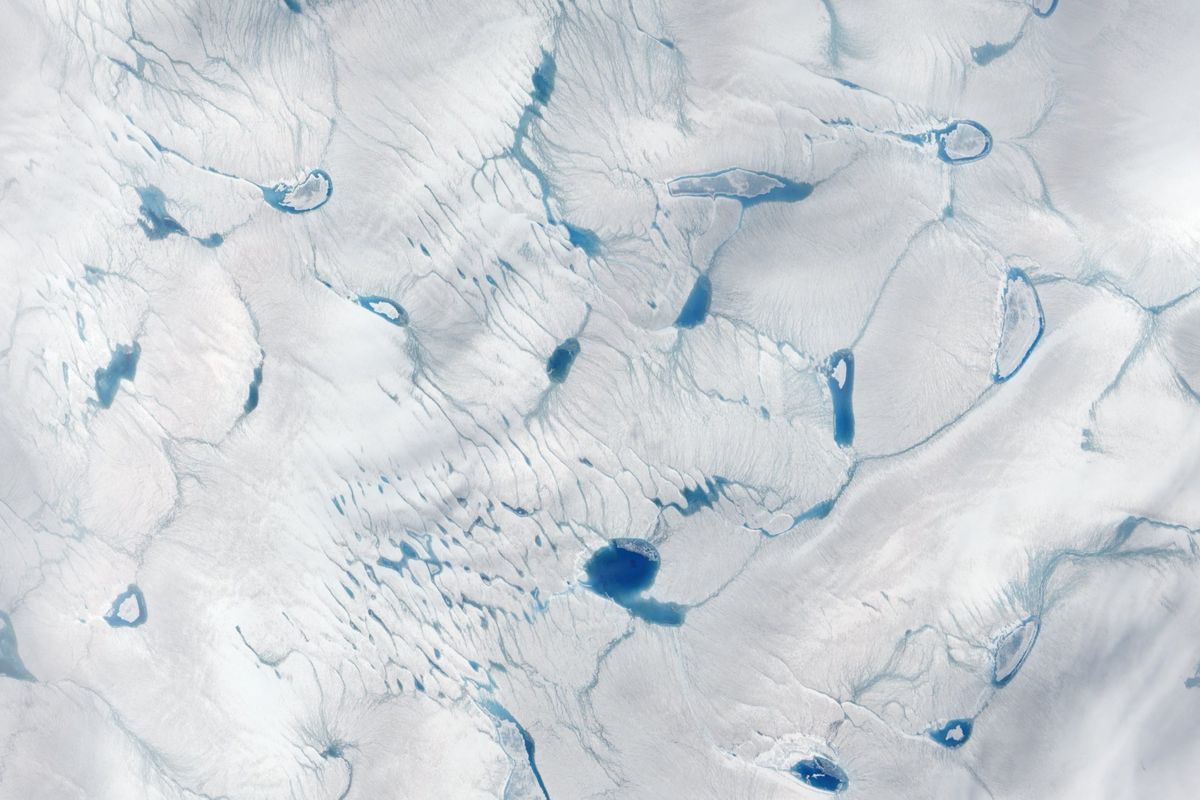Greenland’s ice sheet is past the “point of no return.” What does that mean for the world?

A few minutes every morning is all you need.
Stay up to date on the world's Headlines and Human Stories. It's fun, it's factual, it's fluff-free.
In a study published last month, climate researchers found that the Greenland ice sheet had melted to such a severe degree that the long-term effects could not be reversed. The situation has been described as being past the “point of no return,” with one of the study’s authors warning that Greenland was the canary in the coal mine for climate change, “and the canary is already pretty much dead.”
The study stated that the melting of the Greenland ice sheet is “the largest single contributor to rising sea levels.”
Rising sea levels have been predicted by climatologists for decades, but it’s a prediction that is often misunderstood or misrepresented by climate change deniers. If sea levels do rise, global resources and livable space will be depleted, creating food shortages and worsening wealth inequality.
Dynamic ice loss
The study – “Dynamic ice loss from the Greenland Ice Sheet driven by sustained glacier retreat” – was published on August 13 in “Communications Earth & Environment,” a Nature Research journal. Nine researchers from the United States and the Netherlands were involved in the study, which found that “The Greenland Ice Sheet is losing mass at accelerated rates in the 21st century.”
Using 34 years of data, up until 2018, the researchers determined that the ice sheet – or continental glacier – that sits on top of Greenland is melting faster than it’s being replenished by snowfall.
Ian Howat, a glaciologist and professor at Ohio State University who co-authored the paper, stated, “The ice sheet is now in this new dynamic state, where even if we went back to a climate that was more like what we had 20 or 30 years ago, we would still be pretty quickly losing mass.” It was a situation that CNN described as having reached “a point of no return.”
As reported by Reuters, Howat’s own phrasing was even bleaker.
“Greenland is going to be the canary in the coal mine, and the canary is already pretty much dead at this point.”
The study reported that the melt off was due to two factors: “increased surface meltwater runoff and ablation of marine-terminating outlet glaciers via calving and submarine melting, termed ice discharge.”
The science of glaciers
In simple terms, a glacier is split into two portions: the ablation zone and the accumulation zone. Ablation is, essentially, the opposite of accumulation, so where snow falling and freezing builds up the accumulation zone, water melting (meltwater) below the surface makes up the ablation zone. Glacial melting and movement help create rivers, mountains and valleys.
As snow accumulates on the surface, snow beneath is compacted, creating a substance called “firn” – not quite snow, not quite ice. Eventually this solidifies into glacial ice. When melting occurs at a greater rate than accumulation – as has been the case in Greenland for decades – the ice sheet shrinks.
The seemingly ironically named Greenland was, at one time, a land of vegetation. However, around three million years ago, the transition to an ice sheet began after a change in the region’s climate following a drop in carbon dioxide.
Why does it matter if Greenland melts?
According to the US National Oceanic and Atmospheric Administration (NOAA), “Global mean sea level has risen about 8–9 inches (21–24 centimeters) since 1880, with about a third of that coming in just the last two and a half decades.”
The mixture of glaciers melting into the sea and the warming sea waters – due predominantly to increased greenhouse gases – is what is leading to these higher levels. As sea levels rise, areas closest to the oceans – where approximately 40% of the US population lives – will experience “flooding, shoreline erosion, and hazards from storms.” It will also damage city infrastructures, from building foundations to roadways.
A study published in October 2019 found that by 2100, an estimated 340 to 480 million people could be displaced by flooding due to rising sea levels. Additional effects of rising sea levels include the destruction of agricultural land, forced mass migration and the destruction of natural habitats for many animals.
In 2019, a study out of Stanford University found that climate change has already been a major contributor in increasing wealth inequality between the richest and poorest countries.
It’s no wonder, then, that eco-anxiety has been increasing, especially in young people who will face the consequences of unmitigated climate change.
Climate change denial
Though 97% of climate scientists agree that human-caused global warming is occurring, there are still many nonscientists who deny that climate change is a real threat, including President Donald Trump. One common argument deployed by skeptics of climate change is to ask, “If ice melting in a glass doesn’t raise the water level in the glass, why would it raise sea levels?”
Conservative talk radio host Rush Limbaugh – given the Presidential Medal of Honor by Trump at the State of the Union address this year – used this argument back in 1992, stating, “even if polar ice caps melted, there would be no rise in ocean levels.”
While melting ice caps won’t raise the sea levels, because they are already in the sea, the melting ice sheets of Greenland and Antarctica are set on land masses. Therefore, when they melt, as they are currently doing, the water flows to the sea, raising the overall levels.
The melting of icebergs also raises the sea level, which might seem counterintuitive because they are essentially giant ice cubes in a large glass of water. However, icebergs are made of fresh water – as opposed to salt water – and are less dense than the ocean water on which they float. When an iceberg melts, it thus takes up slightly more room than when it is solidified.
Another argument against concerns over climate change is that, historically, climate is always changing, which is scientifically accurate. To be clear on the difference between climate change and global warming – climate change often refers to changes in long-standing weather patterns while global warming is an example of this phenomenon, where a general rise in surface temperatures is observed. Climate change is what led to the formation of the Greenland ice sheet. In that process, though, the island became inhabitable for most types of life, both animals and plants.
In other words, if there is a way to prevent accelerating climate change, it is in humanity’s best interest to do so.
Have a tip or story? Get in touch with our reporters at tips@themilsource.com




Comments ()